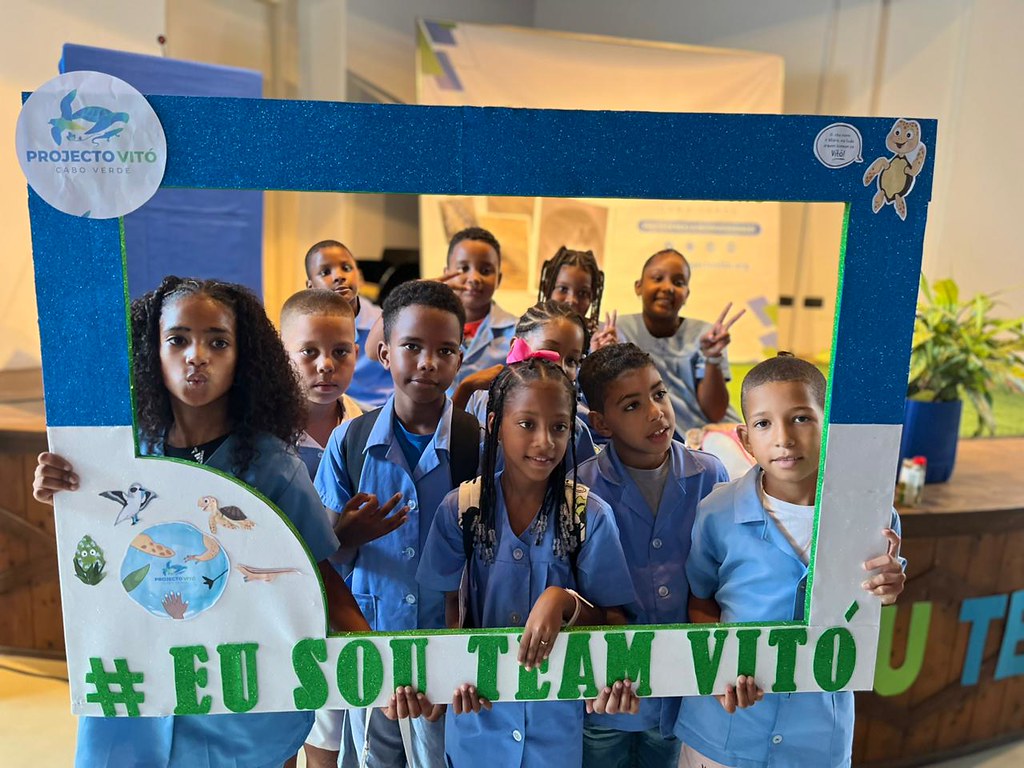Nearly 600 km west of the African continent lies the Republic of Cabo Verde, a Small Island Developing State (SIDS) made up of ten volcanic islands, populated by just over half a million people. In the southern part of the archipelago, Fogo is the youngest and most volcanically active island in the country, with a population of about 48,700 residents.
No wonder its name means ‘fire’: the Pico do Fogo volcano – the highest point in Cabo Verde, standing at 2,829 metres above sea level – has erupted six times over the past 200 years, most recently in November 2014. On that occasion, lava expelled by the volcano over 88 active eruption days forced the evacuation of 964 residents from nearby villages.
Located inside the volcano crater, in a unique landscape that resembles the Moon, the community of Chã das Caldeiras was completely gone. The lava buried homes, schools, health centres and community hubs, besides inundating roads and destroying the farmlands that villagers relied upon for their subsistence and livelihoods.

Life After Lava
Almost a decade later, this resilient community has bounced back. Around 500 people live in Chã das Caldeiras today.Alongside agriculture, they now work in tourism as the village lies at the heart of Fogo Natural Park, a protected area created in 2003 to safeguard the Pico do Fogo volcano, its crater and crater rim, and the forest of Monte Velha.
Holding a significant concentration of native species, Fogo Natural Park is at the core of the recently declared Fogo Biosphere Reserve, which encompasses the entire island and three miles of ocean around it.
This Reserve is home to one of Cabo Verde’s most important birdlife areas and to threatened sea turtles that nest on its black sandy beaches. The endemic cow tongue (Echium vulcanorum), a flowering plant with medicinal uses, is also found within it, as well as six endemic terrestrial reptile species, including the rare López-Jurado's half-toed gecko (Hemidactylus lopezjurado).
Since 2011, the Global Environment Facility (GEF) Small Grants Programme (SGP), implemented by the United Nations Development Programme (UNDP), has invested in 19 projects executed by civil society organizations in and around Fogo Natural Park to address land degradation, deforestation, biodiversity conservation, water accessibility and sustainable energy access issues.

Catalyst for conservation and resilience
In the face of escalating global crises, including biodiversity loss and climate change, SIDS like Cabo Verde find themselves on the frontline, constantly navigating through a cycle of environmental disasters and recovery efforts, which tests their resilience and ability to sustain their communities and economies.
The designation of the Fogo Biosphere Reserve in 2020 represented a great commitment from Cabo Verde’s government towards biodiversity and cultural preservation, recognizing the link between healthy ecosystems, resilient communities and economic stability.
Following this milestone, SGP partnered with the Vitó Project Association to support the operationalization of the Biosphere Reserve. Vitó is improving biodiversity conservation in the Reserve by directly supporting the management of Fogo Natural Park using a citizen science approach and promoting the transfer of scientific and technical knowledge to civil society through awareness-raising campaigns.




